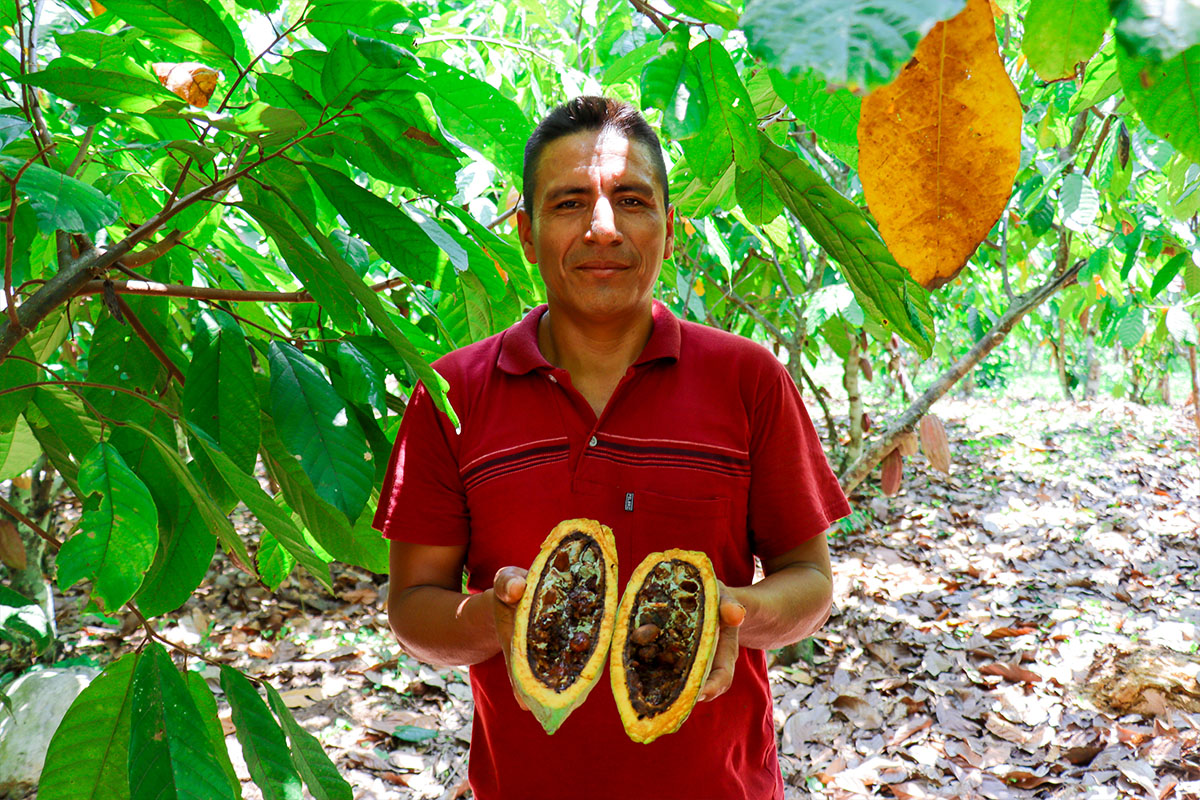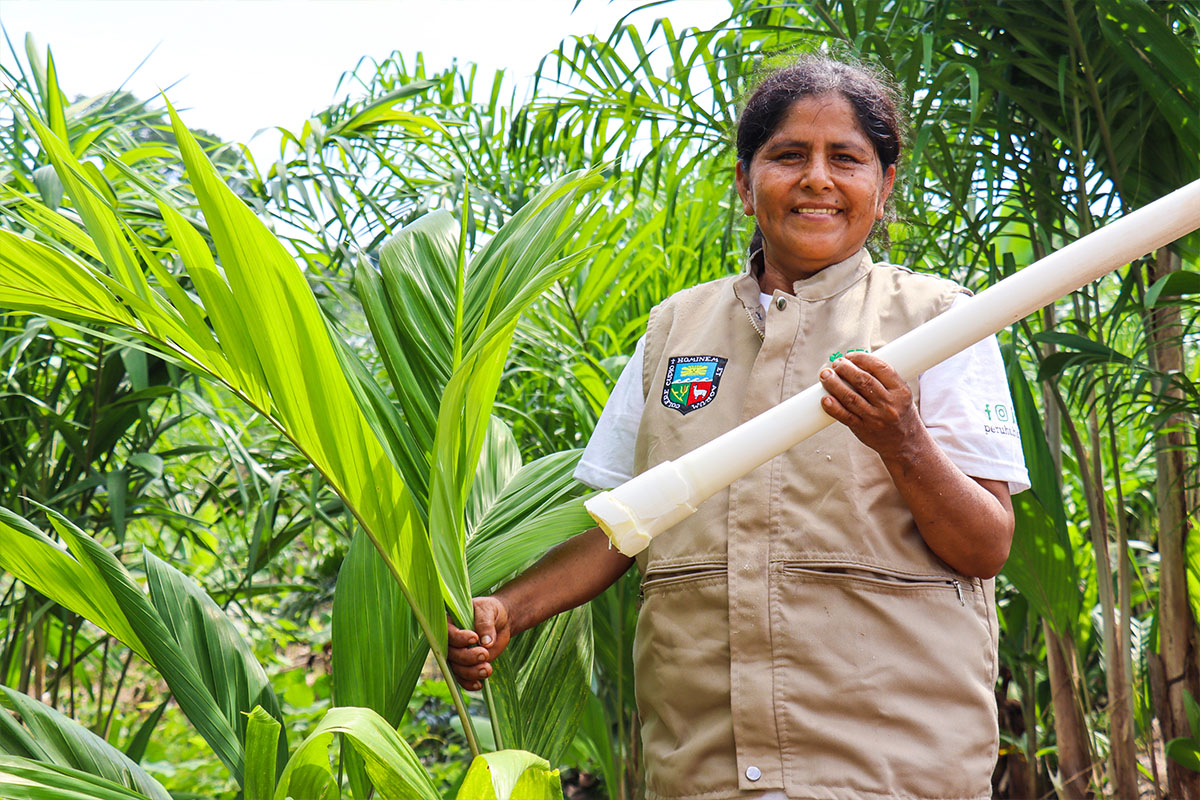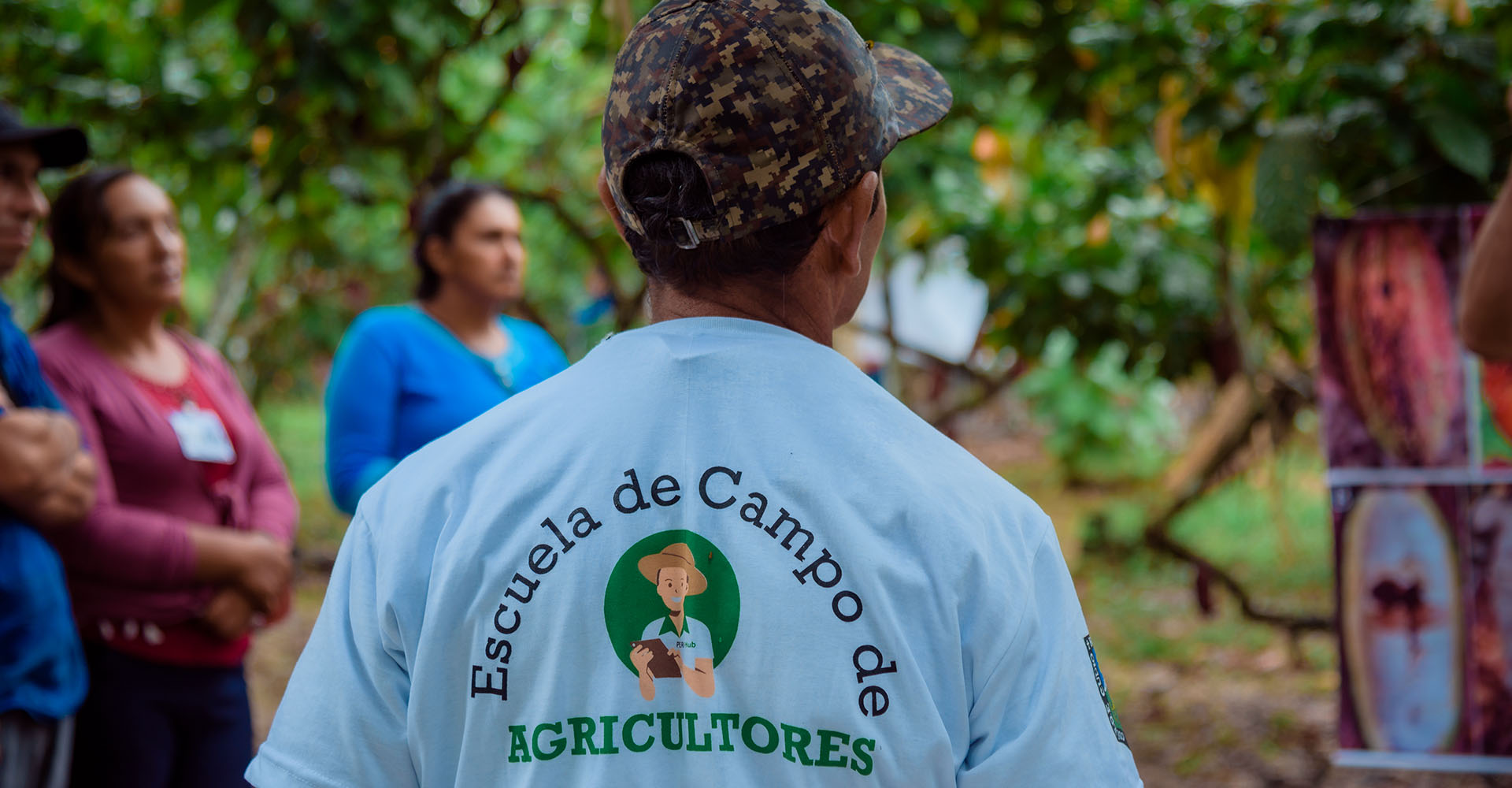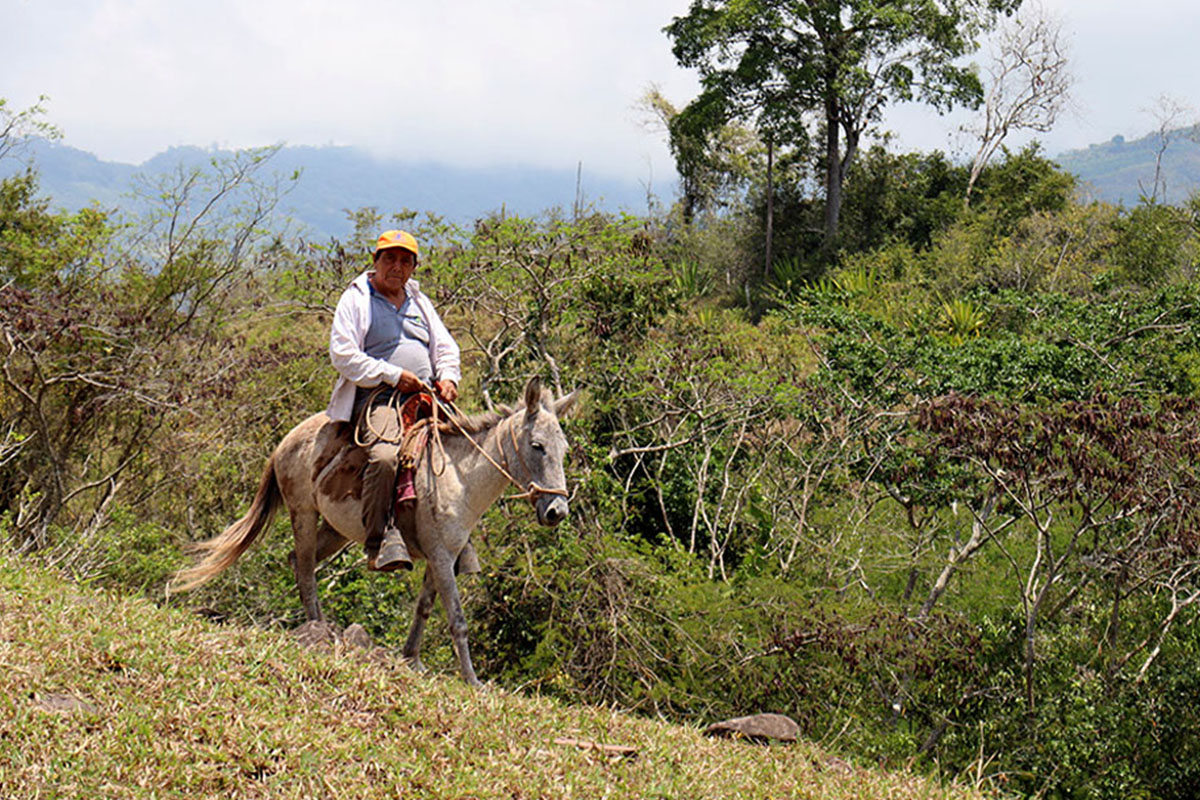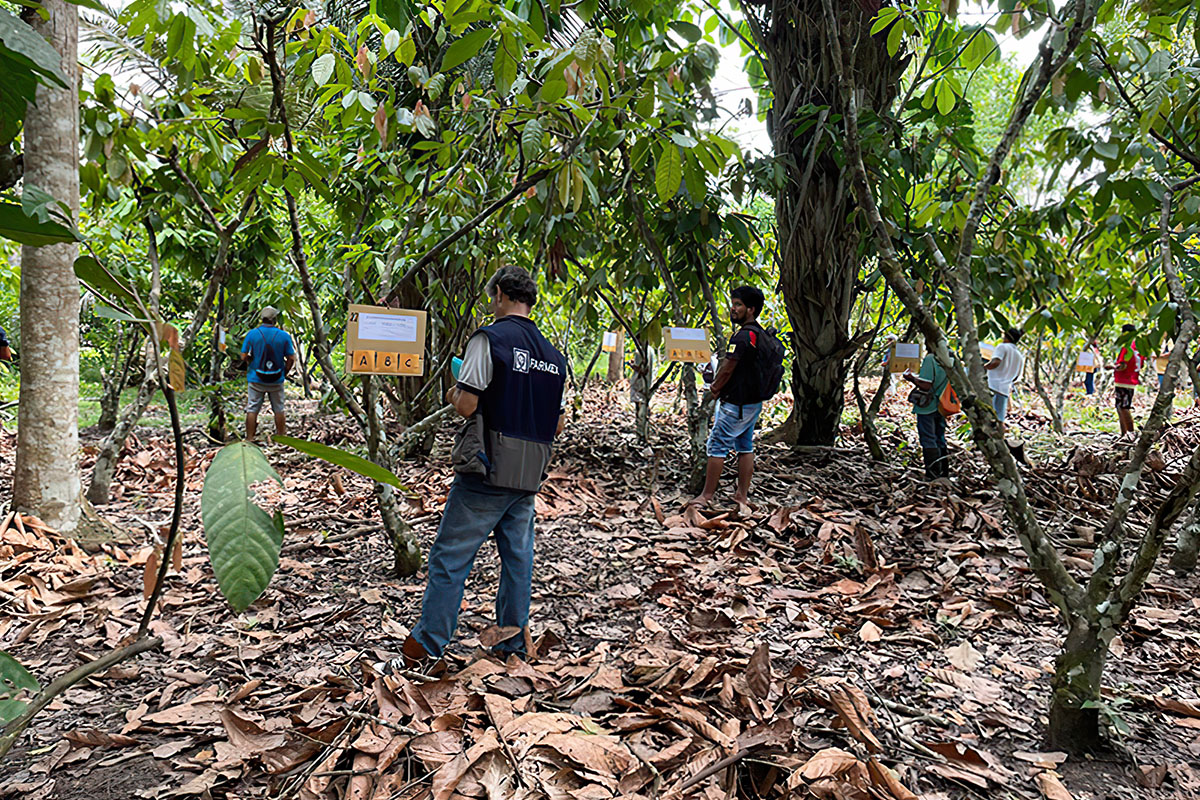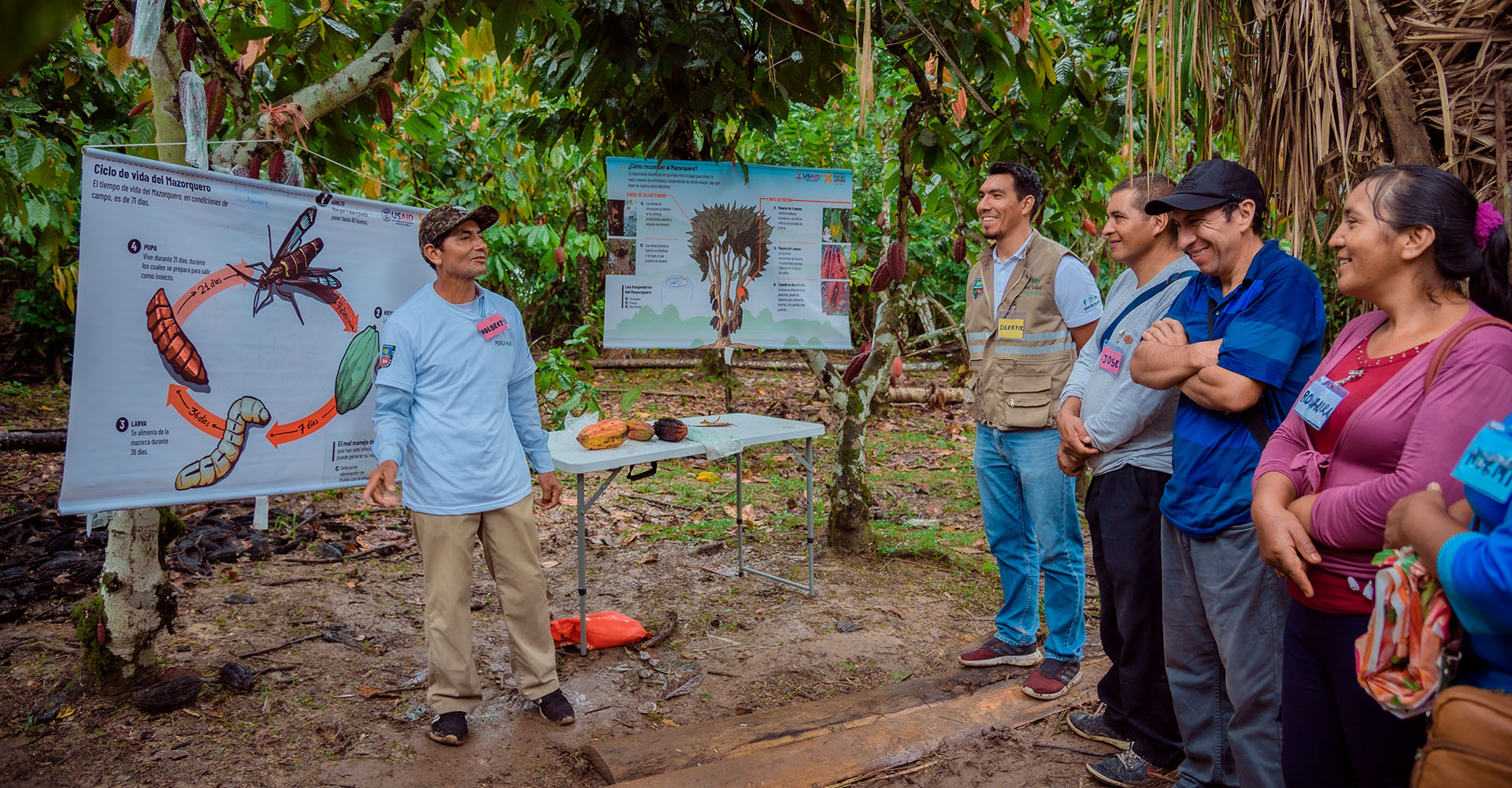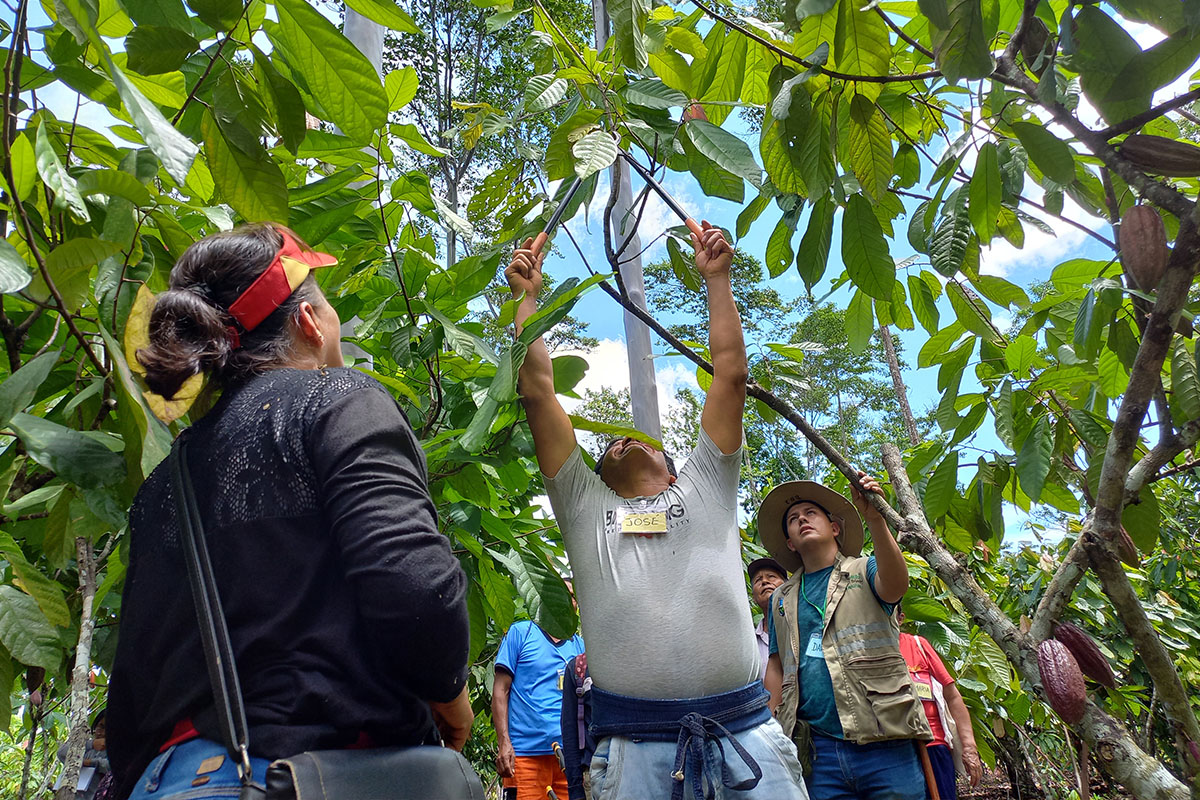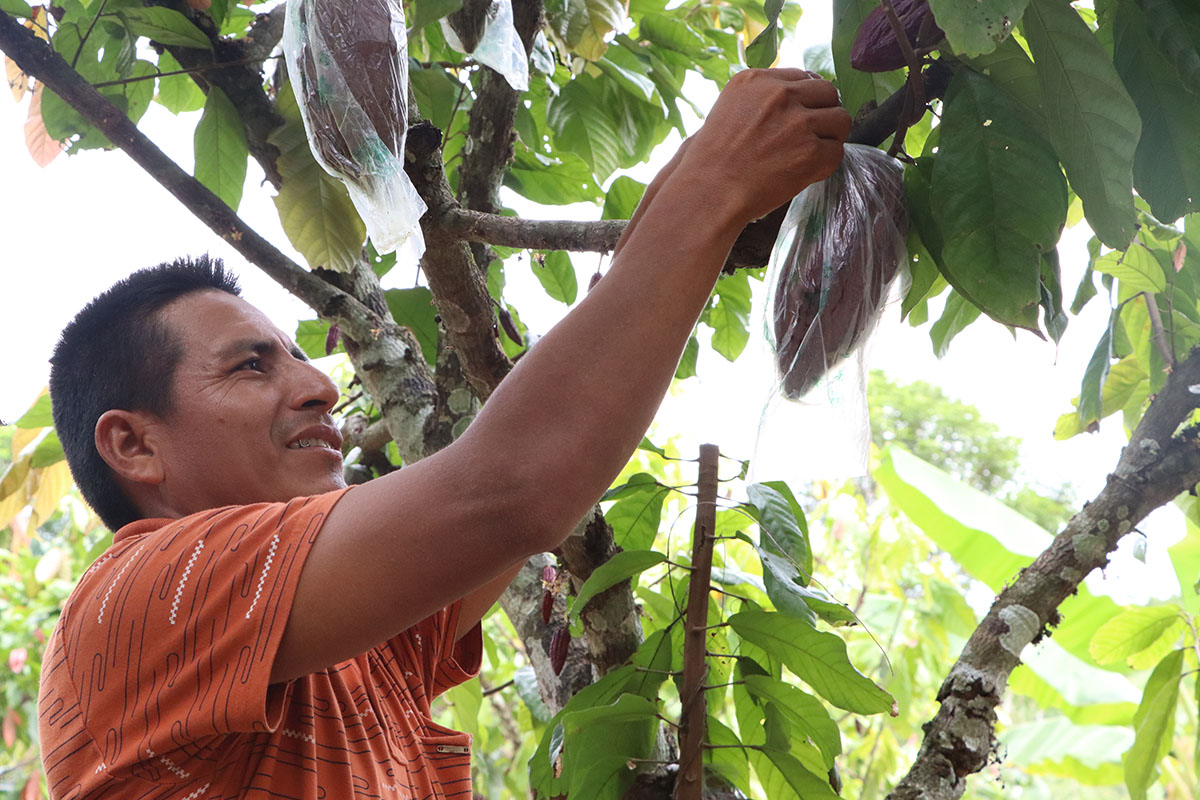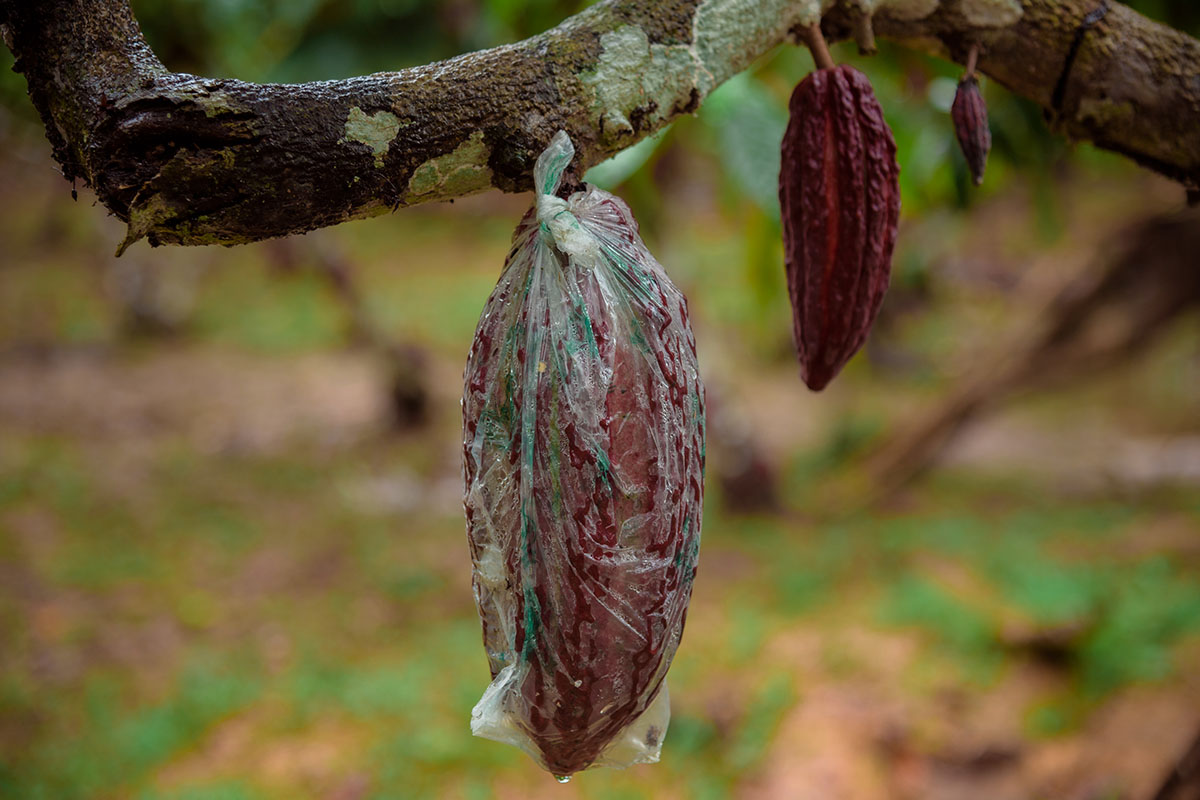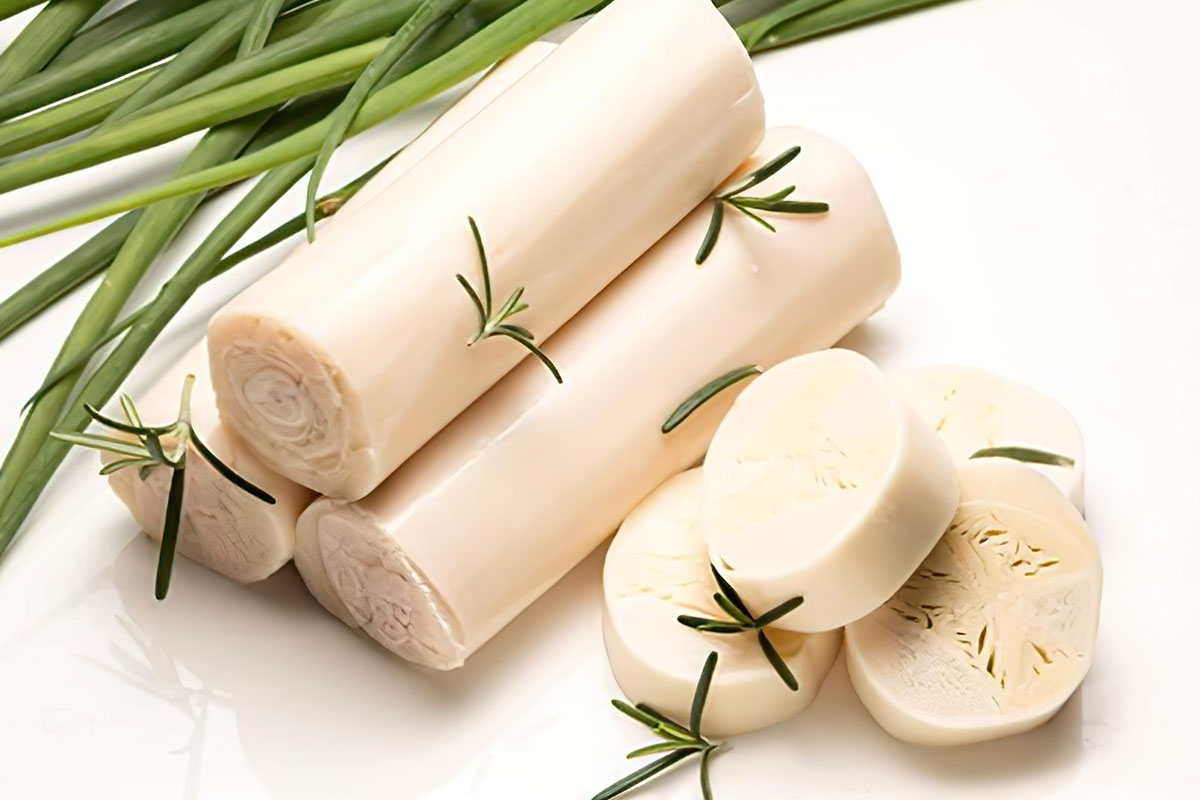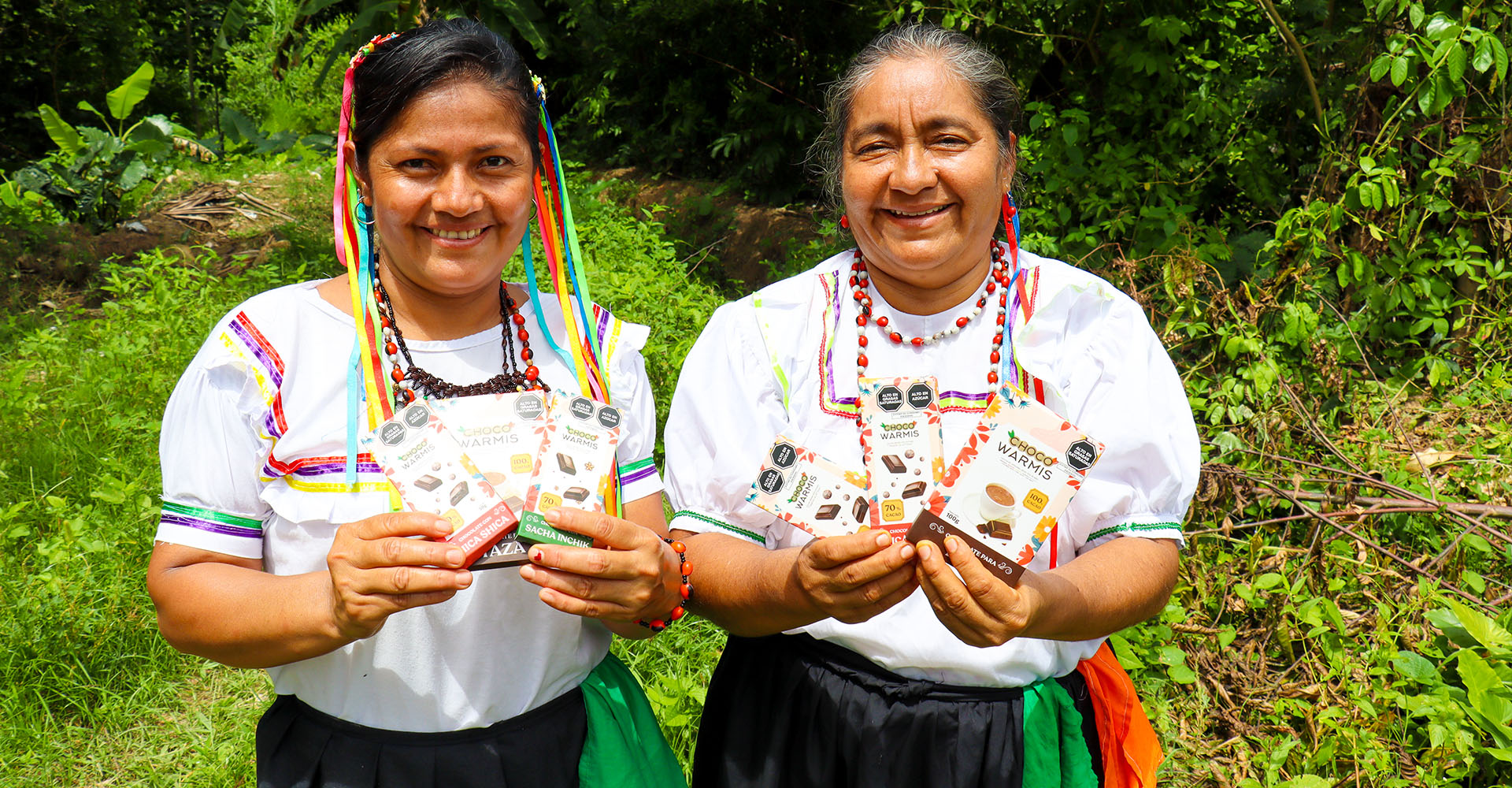Percy Salas Isuiza was born in the Amazonian native community of Kawana Sisa, in the province of El Dorado, in the San Martín region of Perú. He is married and has four kids. Ever since he was young, his parents taught him to crop cacao, and now he has two hectares of land where he is growing this popular and valued fruit.
Before diseases and pests proliferated in the cacao trees in his community, Percy received a steady, regular income, because he always had a consistent amount of dry cacao beans to sell in the local market after every harvest season. But lately, he has been losing about 70 percent of his fruit due to pests and diseases. Without assistance and lacking the tools and knowledge to protect his crop, he is abandoning his plantation, losing the production that maintains his household income.
In another distant province, Lubina Cruz Lopez has also experienced some difficulties getting good harvests. She is a young single mother and also a grandmother – three sons, one daughter, and one granddaughter – who lives in the community of Alianza, in the district of Caynarachi, province of Lamas, where and for a long time has been working alone cultivating peach palm, from which she obtains the heart of palms in her three hectares plot of land.
Before attending PERU-Hub’s Farmers Field School (FFS), Lubina managed her crops based on empirical knowledge, causing her to lose 30 to 40% of the palms she planted, mainly due to inadequate soil management and lack of fertilization.
Although miles apart, Percy and Lubina began to change their stories and families when they started attending the Farmers Field Schools. Held in their own communities, these schools are implemented through a learning methodology adapted by La Molina to facilitate the transfer of sustainable technologies and practices to farmers in San Martin. Supported by a practical approach and technical visits, producers can use their land and resources to enhance their production and improve their income.
OVERVIEW OF SAN MARTIN’S CONTEXT
San Martin, a region in northern Peru, is located in the upper section of the Peruvian Amazon rainforest. The largest city in the area is Tarapoto, where UNALM and USAID are working together to develop PERU-Hub, a Center of Excellence and Technology, for the benefit of Peruvian Amazonian agriculture.
Despite the economic and social upheaval that the COVID-19 pandemic has caused in the country, San Martín stands up as a promising region that offers vast opportunities for economic revitalization, according to Observatorio Propuestas del Bicentenario (a platform from Videnza Institute). Unfortunately, Peruvian agriculture lacks an efficient all-encompassing technology transfer system for the Amazon, curtailing farmers' opportunities to benefit from research results from national institutions, such as UNALM, the leading Peruvian university in agriculture.
In the last two decades, producers from San Martin have made remarkable progress toward leaving behind an era dominated by illicit crops and overcoming the ills of subsistence agriculture. This transformation was made possible by their determination coupled with the support of institutions such as USAID. In a competitive world, changing livelihoods and making progress in San Martin demands addressing the technical challenges and constraints producers face.
A national survey held in 2022 by The National Institute of Statistics and Informatics (INEI, in Spanish) shows that less than 4 percent of producers have received any type of technical assistance and only 6 percent participate in business associations or cooperatives. Moreover, around 51 percent of farmers and cattle farmers in the country have only completed primary education. Without technology, assistance, and limited infrastructure, producers cannot integrate their products into competitive international markets.
PRESSING CROPS PROBLEMS
The cacao trees of Percy Salas have been facing the pest commonly known in the region as “mazorquero,” (scientific name is the Carmenta foraseminis). The “mazorquero,” is the most critical cacao pest in the entire region. According to the French Agricultural Research Centre for International Development (CIRAD, in French), mazorquero is an invasive moth species that is increasing across South America. It was first observed in the Upper Huallaga Valley in Peru in 2013. The larvae of the mazorquero pierce the fruits and feed on the seeds, passing from the pupal stage inside to become adult moths, causing inadequate maturation and fermentation, and allowing the entry of fungi. According to a report by Agronoticias in 2018, a popular Peruvian virtual magazine on agricultural news, the damage produced could mean crop losses of 30 to 70 percent for farmers of the region.
The other main crop problem is the prevalence of diseases such as Moniliasis (caused by the fungus Moniliophthora roreri) which causes the most damage in this region. The infection begins when the fungus’ conidia or reproductive spores reach the surface of the fruit, due to high humidity and temperature conditions. They germinate and penetrate the pod, causing internal damage in the early stages of the disease.
Another local disease of importance in San Martin is a black pod, caused by microorganisms of the genus Phytophthora, previously classified as fungi but currently grouped with the Kingdom Protistas. Black pods can attack different parts of the plant but, like moniliasis, they can damage the cacao beans directly.
But pests are not the only problem farmers face. Most of them don´t know how to apply proper soil management and it is very common for them to feel frustrated because they lose more than half of the production. Before the establishment of PERU-Hub’s FFS, Lubina Cruz didn´t have technical knowledge for the management of the peach palm, such as the use of the appropriate plant nutrients and biofertilizers.
Both Percy and Lubina were invited to attend the Farmer Fields Schools and their expectations about their crops started to change.
CULTIVATING KNOWLEDGE
According to the Food and Agriculture Organization (FAO), a Farmer Field School is structured around an experiential and participatory learning methodology developed in the eighties, and adapted to the different contexts and needs around the world such as in Perú.
Through these schools, rural leaders exchange knowledge, based on experience and experimentation through simple methods and practices, utilizing their land and their homes as teaching and learning resources. Following this methodology, PERU-Hub puts farmers and their families at the center of their development by promoting sustainable practices and technologies.
Each FFS, in charge of the Extension Component of PERU-Hub, has been structured into 15 sessions, carried out biweekly, including the implementation of demonstration plots. These sessions allow farmers to learn how to strengthen their technical and commercial capacities and add value to their agricultural and livestock production, facilitating access to the market and improving their income.

